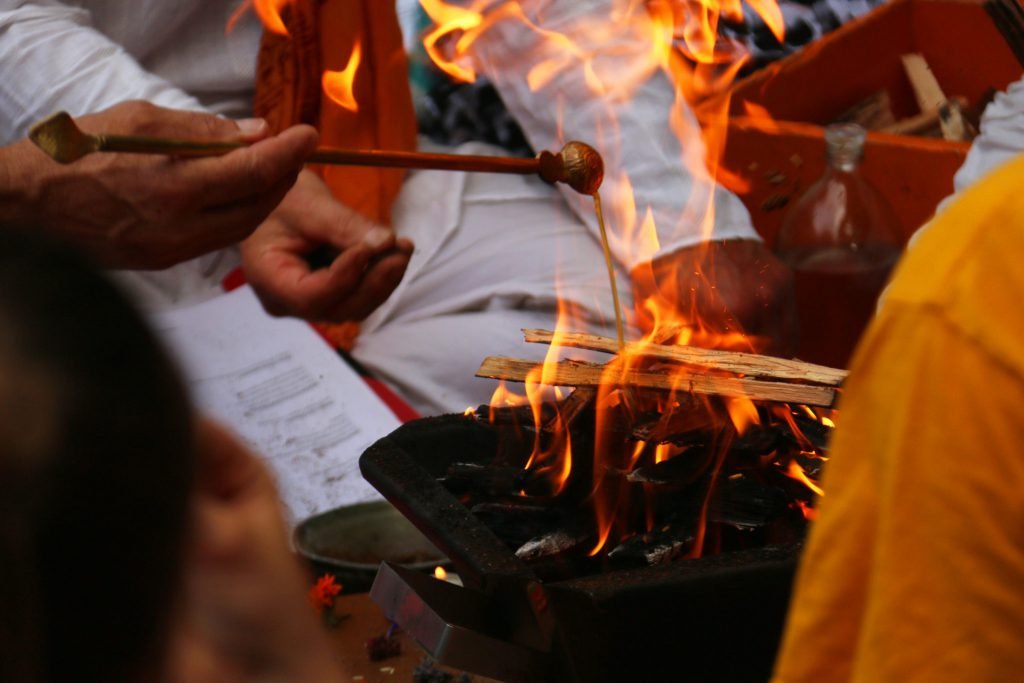In the Hindu Sanatan tradition, the great importance of Yajna or Havan has been mentioned. The fire of Havan is the greatest means of purification. The process of delivering havishya to the gods and goddesses through fire in the kund is called havan. Havishya is the substance by which the sacred fire of Havan is sacrificed. From time immemorial, there has been a tradition of performing Yajna for the fulfillment of a wish. Sages and sages have been performing Yajnas for many purposes like attaining divine vision, pleasing the gods, making it rain, destroying demons. The kings and maharajas performed yajnas for the prosperity, expansion and protection of their kingdom from enemies. Sacrifice of different materials Just as Yajna or Havan has been given the highest priority in the Vedas, Havan has the same importance in astrology. For the peace of the Navagrahas and after chanting the mantras of each planet, there is a provision to perform the tithe of chanting number.

In fact, without Havan, no worship, mantra chanting can be complete. In various texts, it has been mentioned regarding the Yajna method that different materials are sacrificed in Havan for the fulfillment of different desires. Sacrifice of a specific object If a havan is being performed for the wish of happiness and prosperity, then a specific object is sacrificed in it. Different materials are used for healing and different materials are used in the havan being performed for the peace of Navagrahas. According to the wish, fruits, honey, ghee, wood, barley, sesame etc. are sacrificed in the holy fire of Havan. According to Kamana, Samidha Samidha is the wood that is used in Havan or Yajna. If Havan is being performed for the peace of Navagrahas, then different Samidha is used according to each planet. Madar for Sun, Palash for Moon, Kher for Mars, Irritable for Mercury, Peepal for Jupiter, Gular for Venus, Shami for Saturn, Durva for Rahu and Kusha for Kusha. Goes.
Madan’s samidha destroys diseases. Samidha of Palash is going to give advancement and benefit in all works. Peepal’s samidha gives offspring, lineage growth, fig tree provides gold, shami’s destroys sin, Durva’s longevity and Kusha’s samidha should be used to fulfill all desires. For all other deities, samidha of mango, palash, ashoka, sandalwood etc. is put in the havan. Samidha according to the seasons In the sacrificial system, clear rules have also been laid down for using samidha according to the seasons. Such as shami in spring, peepal in summer, dhak or bilwa in rain, mango or pakar in autumn, kher in autumn, samidha of fig tree or fig in winter should be used. Fire basically has the property of purification. She destroys all evils, defects, diseases with her warmth. Everything that comes in contact with fire purifies it. That is why the tradition of Yajna, Havan has been going on since time immemorial. Many researchers from western countries have proved that the air in the place where Niyati Agnihotra or Havan takes place is cleaner than the air in other places.
Items thrown in the incinerator not only keep the environment clean but also destroy germs. It cures many diseases. The camphor and fragrant substances are thrown in the incense spread a special type of aroma in the atmosphere which has a positive effect on the mind-brain. How is the incense material? The material used in the incense should not be rotten, mite, insect-infested, soaked. Samidha of trees planted in the crematorium should not be used in Havan. The branch of the tree on which the bird’s nest is should not be cut and used in the incinerator. Use another cut. The forest and the trees along the river are said to be the best for samidha havan.
